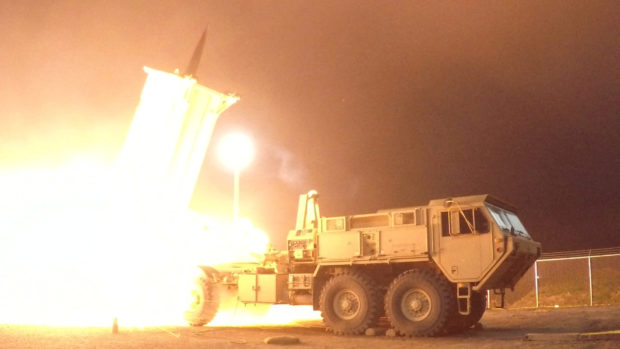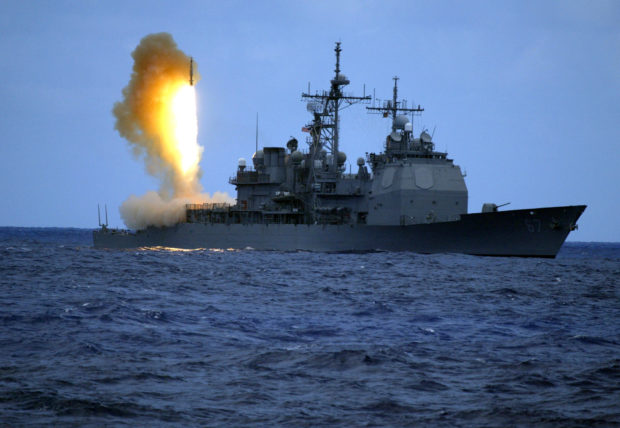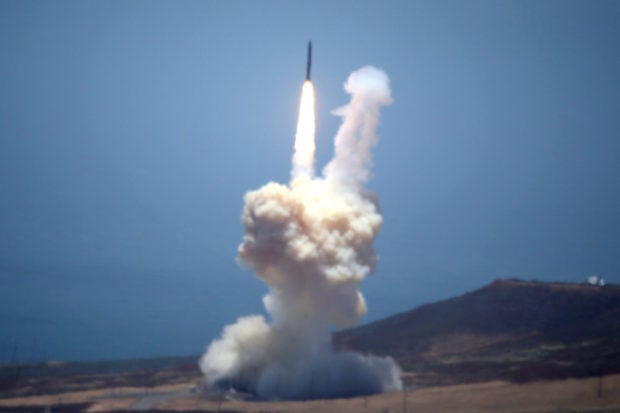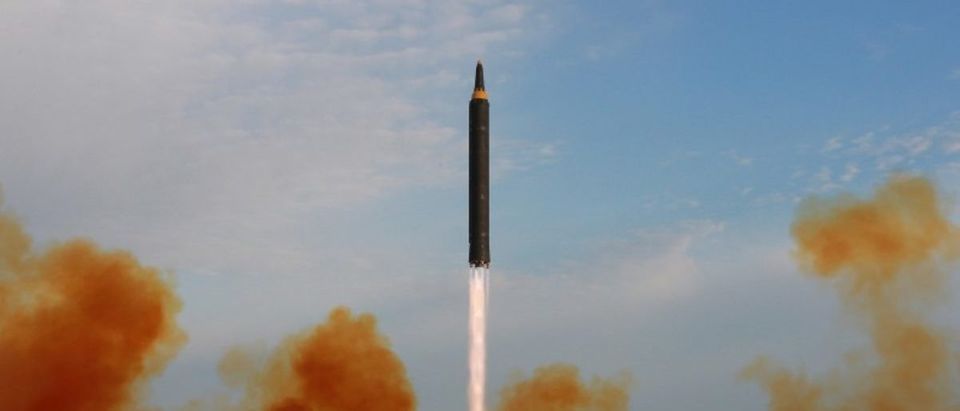The U.S. is boosting its missile defenses, but whether or not they would hold up against a North Korean strike is debatable.
The U.S. is considering shooting down North Korean ballistic missiles even if they are not a direct threat to the U.S. and its allies, a U.S. official familiar with operations planning told CNN Tuesday.
North Korea has recently fired two Hwasong-12 intermediate-range ballistic missiles over Japan into the Pacific to evaluate its ballistic missiles under more realistic conditions. In both cases, the allies did not take steps to shoot down North Korea’s missiles.

A Japan Self-Defense Forces (JSDF) soldier takes part in a drill to mobilise their Patriot Advanced Capability-3 (PAC-3) missile unit in response to a recent missile launch by North Korea, at U.S. Air Force Yokota Air Base in Fussa on the outskirts of Tokyo, Japan August 29, 2017. REUTERS/Issei Kato
“I would hope that we shoot it down as a message to the North Koreans and to other people, like in Japan, who are counting on us,” California Rep. Dana Rohrabacher said during a House Foreign Affairs Committee hearing. “Unless we demonstrate we’re willing to use force, there’s no reason for them to believe we will.”

A Terminal High Altitude Area Defense (THAAD) interceptor is launched from the Pacific Spaceport Complex Alaska during Flight Experiment THAAD (FET)-01 in Kodiak, Alaska, U.S. on July 30, 2017. Picture taken on July 30, 2017. Courtesy Leah Garton/Missile Defense Agency/Handout via REUTERS
The U.S. and its allies have several different missile defense systems in place to counter the North Korean ballistic missile threat. These defense systems include the Patriot, Aegis, Terminal High Altitude Area Defense, and ground-based midcourse defense systems. The first three are regional defense units, while the last defends the U.S. from long-range missiles.
Intercepting a North Korean missile is almost impossible in boost phase. To even have a chance, Aegis-enabled ships would need to be stationed off the coast of North Korea.

A Standard Missile Three (SM-3) is launched from the guided missile cruiser USS Shiloh (CG 67) during a joint U.S. Missile Defense Agency, U.S. Navy ballistic missile flight test in the Pacific Ocean, June 22, 2006. Picture taken on June 22, 2006. REUTERS/U.S. Navy/Handout
For the shots over Japan, neither the PAC-3 systems in country nor the Aegis destroyers armed with SM-3 interceptors nearby would have likely been able to eliminate the North Korean missiles, because the missiles were too high when they passed overhead.
The only option is a midcourse or terminal intercept. Assuming an Aegis ship was operating in waters east of Japan in just the right location, there is a possibility it could intercept a missile. THAAD, which is stationed in Guam and South Korea, could potentially take out a North Korean missile in terminal phase, but there are a lot of variables.
Many of these systems have never been tested in combat, and the GMD system that defend the U.S. mainland have a spotty overall performance record.

The Ground-based Midcourse Defense (GMD) element of the U.S. ballistic missile defense system launches during a flight test from Vandenberg Air Force Base, California, U.S., May 30, 2017. REUTERS/Lucy Nicholson
Missile defense in general is a challenge with no guarantee of success.
“People think missile defenses are a magic wand. They aren’t,” Jeffrey Lewis, the director of the East Asia Nonproliferation Program in the James Martin Center for Nonproliferation Studies at the Middlebury Institute of International Studies, told The Daily Caller News Foundation.
“Let us say that there is someone on the other side of a large room shooting at you and you are shooting back,” Melissa Hanham, a senior research associate in the East Asia Nonproliferation Program in the James Martin Center for Nonproliferation Studies, explained to TheDCNF. “Maybe you could ricochet one of the bullets if you are an excellent marksman, but you are still going to get hit with other bullets.”
Send tips to ryan@
All content created by the Daily Caller News Foundation, an independent and nonpartisan newswire service, is available without charge to any legitimate news publisher that can provide a large audience. All republished articles must include our logo, our reporter’s byline and their DCNF affiliation. For any questions about our guidelines or partnering with us, please contact licensing@dailycallernewsfoundation.org.


